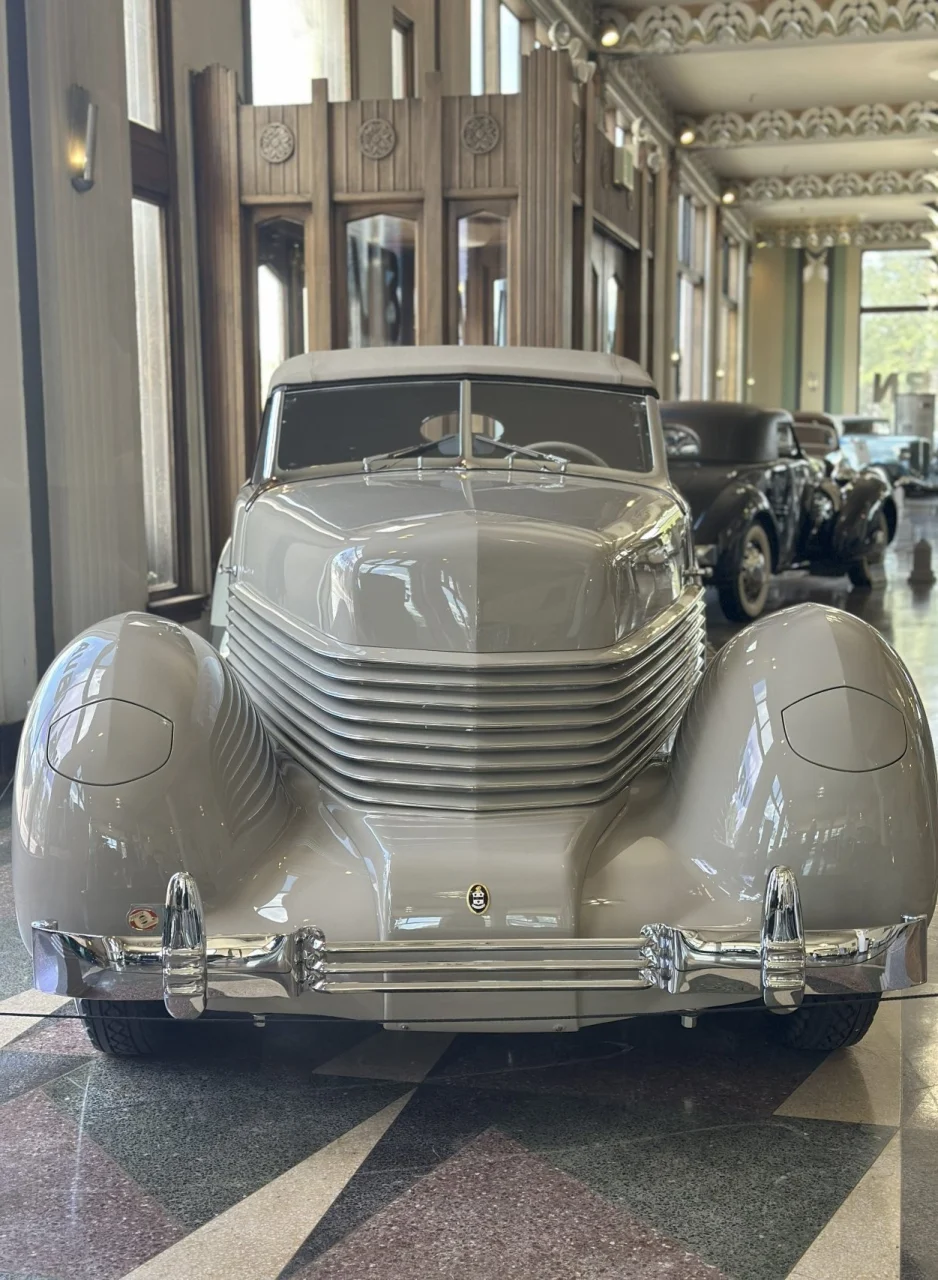No matter how many books or videos are published on automotive history, there are still so many things that we don’t know. The answers to countless questions that start with the words “What if” are particularly elusive because time has never given us a chance to learn them. What if Pontiac kept making cars? What if Chrysler never hired Lee Iacocca? We’ll never know. Fortunately, we have an idea of what a Cord would have looked like had the company stayed in business past 1937 because the Auburn Cord Duesenberg Automobile Museum now has an “814” Cabriolet prototype as one of its exhibits.
Visually and mechanically, the 1936 Cord 810 (and the subsequent 1937 Cord 812) was a distinctive car in its time. Instead of an exposed, upright radiator shell, it had a “coffin nose” hood that covered its radiator. Hand cranks on the dashboard opened the covers for the concealed headlights. In an era in which rear-wheel drive was the norm, the 810 sent power from its Lycoming V8 to its front wheels. Even shifting in the 810/812 was different because a small key-like lever controlled the four-speed pre-selector gearbox. As beautiful and unusual as the designs for the 810 and 812 sedans and convertibles were, they didn’t last long. Neither did Cord as a whole—by 1937, it closed down.

What if Cord kept going? Well, it may not have made it to today, but we at least have an idea of the potential changes in store for the 1938 version of the 812. In keeping with Cord’s naming convention, this cabriolet prototype is unofficially known as the “814.” Designer Alex Tremulis (who contributed to the designs of its predecessors), subtly updated the styling. He smoothed out the hump over the front-mounted transmission. If you look at the louvers below the hood, you’ll see there’s a slight rake to them, giving the 814 an even more dramatic and distinctive appearance. (Too bad there aren’t any side exhaust pipes snaking out of the engine bay.)

Given Cord’s short life span, it’s amazing this prototype was made in the first place. What’s even more astonishing is that this 1-of-1 beauty still exists. We can thank Alvin Sikora and his family for rescuing it and restoring it to “flawless, 100-point condition.” If you happen to be in or around Auburn, Indiana, you can see this piece of history at the Auburn Cord Duesenberg Automobile Museum. There’s also a video of the “814” being moved into its exhibit space on the museum’s Instagram page.

